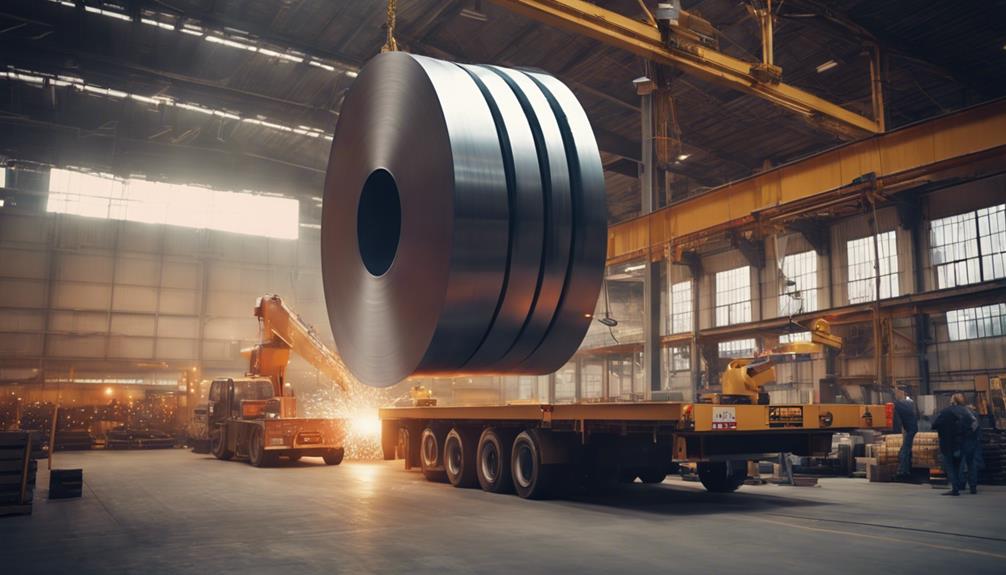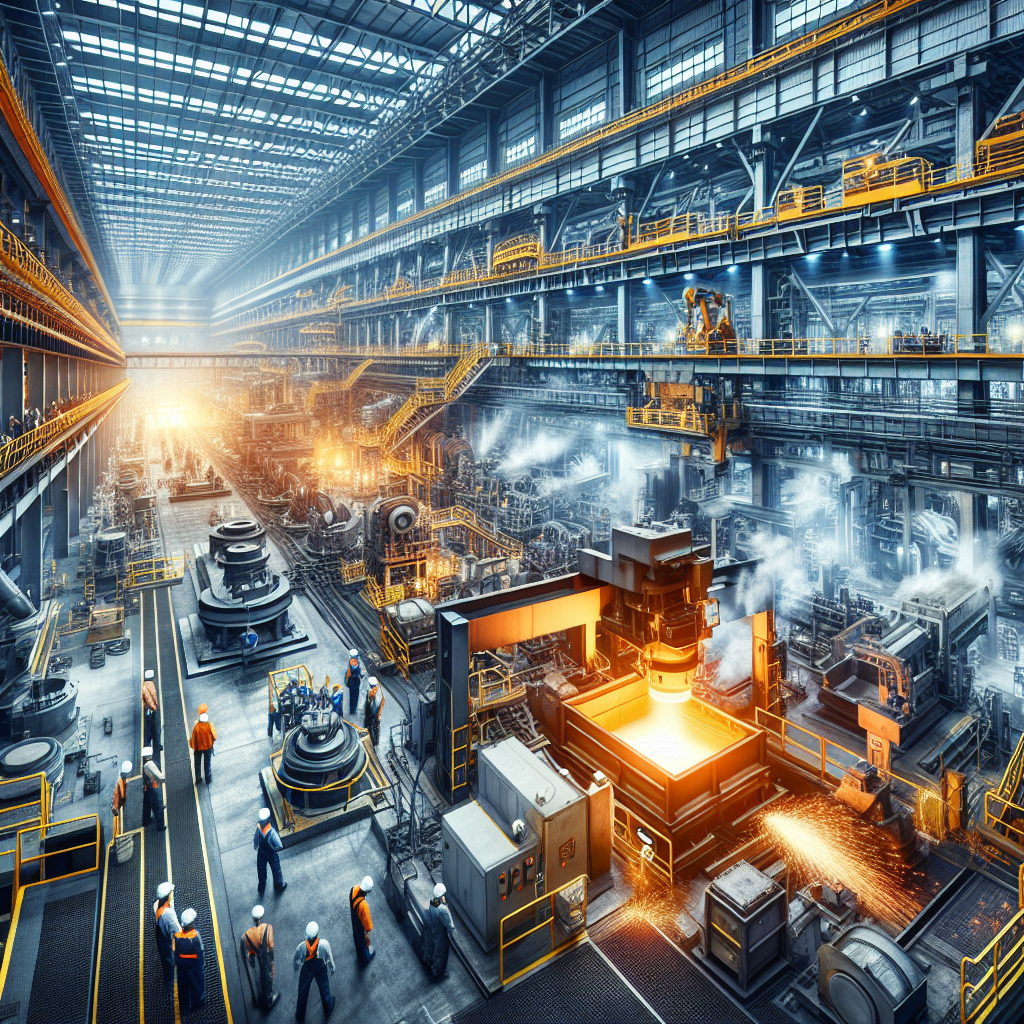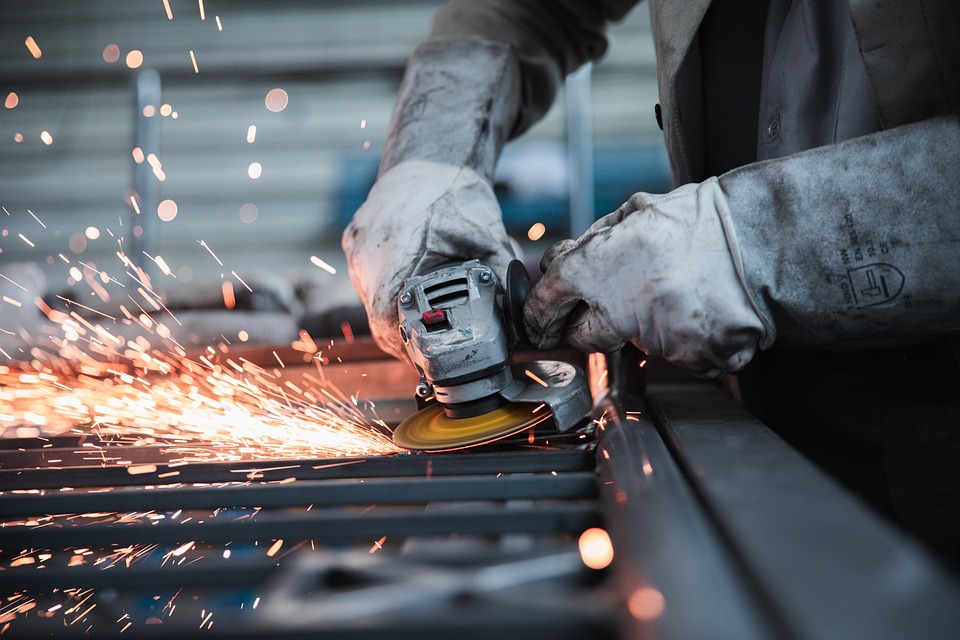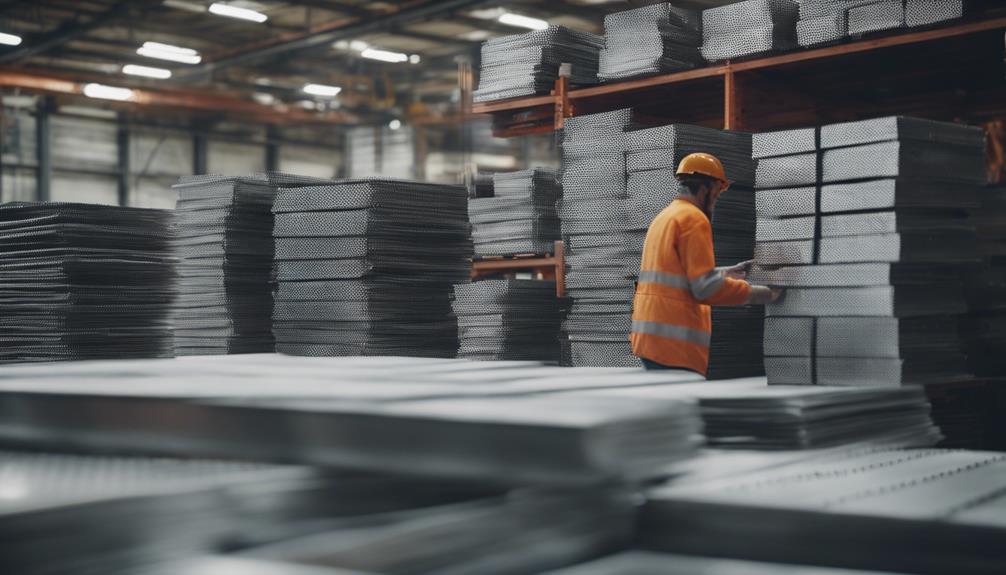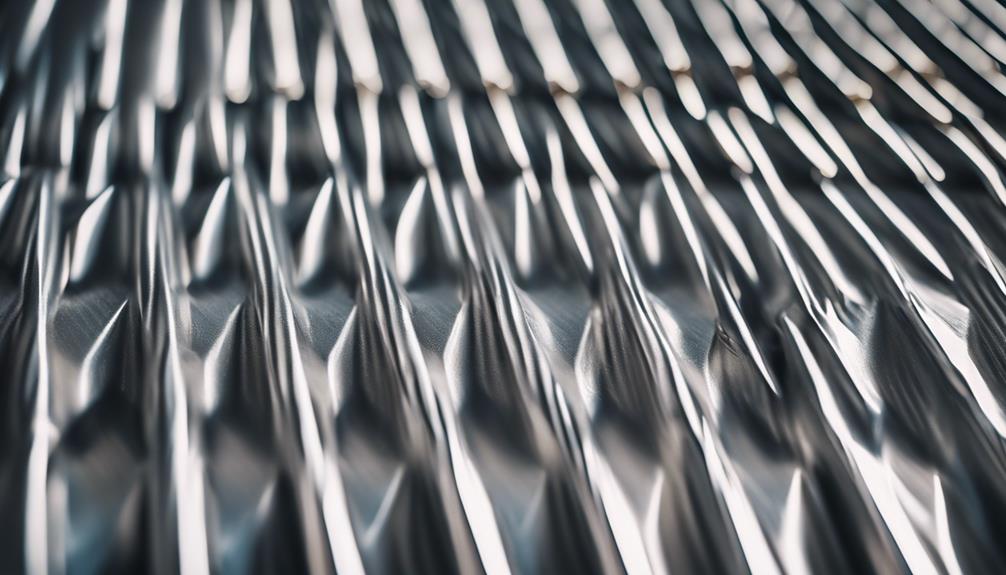Steel coil, an essential material in various sectors such as automotive, construction, and manufacturing, undergoes a production process that includes hot-rolling and cold-rolling techniques to achieve specific thicknesses and shapes. Its applications range from chassis components in the automotive industry to infrastructure development in construction. The processing techniques, like slitting and galvanizing, guarantee versatility and durability for industrial use, catering to a wide range of applications. Understanding the nuances of steel coil measurements, quality factors, and environmental impact is vital for optimizing industrial operations and meeting sustainability goals. Explore further to discover the broader impact and innovations in steel coil technology.
Key Takeaways
- Steel coil production involves hot and cold rolling processes for specific shapes and thicknesses.
- Applications in automotive, construction, and manufacturing sectors for diverse industrial needs.
- Processing techniques like hot and cold rolling, slitting, and galvanizing ensure functionality and protection.
- Importance of accurate measurements for specifications, handling, and cost-effective production optimization.
- Factors affecting quality include raw materials, production processes, surface finish, and quality control measures.
Steel Coil Production Process
The steel coil production process encompasses a series of meticulously controlled steps to transform flat steel sheets or strips into efficiently coiled forms suitable for various industrial applications. Initially, hot-rolled steel coils are processed at high temperatures to achieve specific thicknesses and shapes. This method allows for greater malleability but may result in a rougher surface finish. Conversely, cold-rolled steel coils undergo a process at lower temperatures, producing a smoother surface and increased durability. Cold-rolled coils are often preferred for applications requiring a high-quality finish. These distinct production methods cater to diverse industry needs, ensuring that steel coils are adaptable for use in automotive, home appliances, agriculture, and construction sectors.
Steel Coil Applications in Automotive Industry
With a pivotal role in the automotive industry, steel coils serve as foundational materials in the production of chassis frameworks, wheels, and various essential components for vehicles. The automotive industry extensively utilizes steel coils due to their high strength-to-weight ratio, which enhances the structural integrity and safety of automobiles. Additionally, the recyclability of steel coils aligns with sustainability efforts in automotive manufacturing. Manufacturers rely on the thermal stability and durability of steel coils to guarantee the longevity of automotive parts, contributing to the overall quality of vehicles. Steel coils play an important role in improving the strength, safety, and sustainability of automotive components, making them indispensable in the production processes within the automotive sector.
Steel Coil Processing Techniques
Utilizing advanced methods such as hot rolling and cold rolling, steel coil processing techniques are pivotal in shaping steel for various industrial applications. Hot rolling involves heating steel materials above their recrystallization temperature, enabling easier manipulation during the rolling process. Conversely, cold rolling is performed at room temperature, resulting in steel coils with smoother surfaces and tighter tolerances. Additionally, techniques like slitting are commonly employed to cut steel coils into narrower strips suitable for diverse applications. To enhance properties and provide protection against corrosion, finishing services such as galvanizing or painting are applied to the steel coils post-processing, ensuring their functionality and longevity in various industrial settings.
Importance of Steel Coil Measurements
Ensuring precise steel coil measurements is crucial for effective industrial operations and product quality control. Steel coil measurements, encompassing width, thickness, length, outside diameter (OD), and inside diameter (ID), are essential for accurate specifications. These measurements facilitate proper handling, processing, and transportation of steel coils across various industries. Understanding steel coil measurements aids in determining material requirements and optimizing production processes. The precision in coil measurements plays a critical role in quality control, inventory management, and meeting customer specifications. Accurate measurements of steel coils are indispensable for cost-effective production, efficient resource utilization, and overall project success. Maintaining precision in steel coil measurements is fundamental for ensuring operational efficiency and product excellence.
Factors Affecting Steel Coil Quality
Steel coil quality is significantly influenced by various factors, including the composition of raw materials, production processes, and surface finish. The raw materials used in the production of steel coils must meet specific standards to guarantee the desired quality. The rolling process and processing techniques employed also play an essential role in determining the final quality of the steel coil. Quality control measures are indispensable throughout the manufacturing process to monitor factors like mechanical properties, dimensional accuracy, and surface defects. Maintaining consistent quality requires strict adherence to standards and procedures at every stage of production. Factors such as coil weight, thickness consistency, and edge condition are carefully controlled to produce high-quality steel coils that meet industry standards.
Handling and Storage of Steel Coils
Proper storage and handling procedures are essential to maintain the quality of steel coils throughout their transportation and storage. Steel coils should be stored in a dry, well-ventilated area to prevent corrosion and rust formation. When handling steel coils, it is important to utilize equipment like coil lifters or C-hooks to guarantee safe movement. Stacking the coils on wooden pallets or dunnage helps maintain stability and prevents damage during storage. Regular inspections for signs of moisture, rust, or deformation are necessary to uphold coil quality standards. Adhering to safety protocols and guidelines for handling and storage is crucial in minimizing the risk of accidents or injuries, ensuring a secure environment for workers and the preservation of the steel coils.
Steel Coil Grades and Specifications
Among the various grades and specifications available for steel coils, a range of common grades includes Aluminized, Cold Rolled, Electro-Galvanized, Galvanized, and Galvannealed. These grades offer diverse properties suitable for different applications in industries requiring coil steel products. Galvanized steel, in particular, is known for its corrosion resistance due to a protective zinc coating. Steel coils are available in various widths, typically ranging from 36 to 72 inches, with detailed specifications provided for selection based on specific project requirements. Understanding the ASTM specifications and weight calculations per square foot for different grades such as CS-B Temper Rolled and DS-B Aluminum Killed is essential when choosing the appropriate galvanized steel coil for a particular project.
Advantages of Using Steel Coil
When considering materials for industrial applications, the intrinsic strength and durability of steel coil make it a favored choice among manufacturers worldwide. Steel coils provide a wide range of applications due to their high strength, making them suitable for construction, automotive, and manufacturing industries. The resilience to corrosion guarantees longevity, making steel coils a reliable choice even in harsh environments. Additionally, the recyclable nature of steel promotes sustainability, aligning with eco-friendly practices. Cost-effectiveness is another advantage, as the long lifespan of steel coils provides value for money over time. Their versatility allows for customization to meet specific project needs effectively, further enhancing their appeal in various industries.
Innovations in Steel Coil Technology
What advancements in steel coil technology have revolutionized its performance and applications? Innovative solutions in steel coil technology have greatly improved its quality and efficiency. The use of advanced processes such as controlling the recrystallization temperature has enhanced the strength, durability, and formability of steel coils. Steel warehouses now benefit from better surface quality and dimensional accuracy, leading to increased productivity and cost-effectiveness. Additionally, the implementation of enhanced coating techniques has resulted in improved corrosion resistance and longevity of steel coils, expanding their applications in various industries. By incorporating automation and precision manufacturing, modern steel coil technology ensures consistent quality and meets the evolving demands of the market for higher performance and sustainability.
Frequently Asked Questions
What Is Steel Coil Used For?
Steel coil plays a crucial role in pipe manufacturing, structural steel fabrication, electronic equipment, automotive parts, and metal stamping processes, allowing the creation of robust and intricate components due to its high durability, strength, and heat resistance.
What Is a Coiled Steel?
A coiled steel refers to a continuous sheet of steel wound into a cylindrical shape for storage and transport. It is a versatile material used across industries for its strength, durability, and corrosion resistance, catering to diverse application needs.
How Heavy Are Steel Coils?
Steel coils vary in weight depending on factors like size, thickness, and material type. Typical steel coils weigh between 5,000 to 25,000 pounds, with larger industrial coils reaching 50,000 pounds or more. Weight is important for logistics.
Why Is Steel Coil Hot?
Steel is heated during the manufacturing process to increase its ductility, making it easier to shape and manipulate. The high temperature helps reduce the thickness of the material while preserving its strength, essential for various industrial applications.






